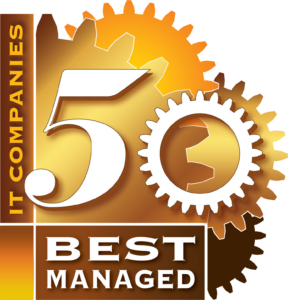
IT Challenges in COVID Times
IT Challenges in COVID Times
The whole world has had to adapt to changes brought about by COVID-19, and the IT challenges we’ve seen are no exception.
One change, for a lot of organizations, is that they’re starting to realize just how critical IT is to their operations. For example, a lot of people have had the ability to work remotely for years, but they weren’t leveraging it. And because everyone has been forced into this situation, a lot of people are learning and trying things that they’ve never tried before.
Also, a lot of organizations have had their eyes opened to what is possible with technology today. They’re asking what kinds of tools are out there, and what technology is available for their business. And there are a lot of things that can be very helpful in driving a business forward.
We’ve seen people starting to take advantage of those tools across different industries and organizations. A permanent shift to more remote work, whether that’s entire companies getting rid of their offices or just being more flexible, is something that every organization needs to be ready for. And at this stage, most organizations have the tools in place to be able to do that.
IT Challenges in Organizational Changes
The biggest challenge that we’ve seen with remote work is not actually technology-related. It’s an organizational change. Companies are trying to figure out how to manage people when they aren’t in the office. They’re trying to maintain a sense of community, of being a team, and a sense of camaraderie. Things need to be done differently than before to achieve that.
Again, it’s not really a technology challenge, although there are tools available that can help with some of those things. The biggest change relates to processes and our mindset for managing people remotely.
At CopperTree, one of the ways we’ve helped companies leverage technology recently is by looking for ways to leverage existing tools. For example, lots of companies have adopted Zoom, or Microsoft Teams, or another videoconferencing platform, but they weren’t fully utilizing it. Maybe they just had it there for occasional meetings.
Also, a lot of organizations were already using the broader Office 365 platform, and Teams is a part of that. They already owned it but never really had to use it. And we help our clients figure out ways to leverage those existing systems that they already own.
Most organizations have figured out how to leverage some of the videoconferencing tools that are out there. It’s not quite the same as an in-person meeting, but it’s certainly a good way to stay connected today. We’re using it with our clients too.
At the beginning of COVID, a lot of people were still uncomfortable doing a video conference rather than an in-person meeting, and that has certainly changed over the last year. Today, most people are leveraging the tools and are pretty comfortable doing so.
Maintaining Maintenance Schedules
Things have changed, but work still needs to be done. For example, at CopperTree, one of our standards has always been regular monthly maintenance onsite. We’d go to each of our clients’ locations and spend some time working with and talking to the users while we do a monthly technology alignment. But we’ve made that mostly into a remote process.
We’re finding ways to leverage technology too. Examples have been sending out surveys instead of talking to users face-to-face to discover issues, or just connecting into their system remotely and doing the work that way.
It’s not quite the same, but everybody adapted and leveraged the tools that are available. And again, it’s highly likely that these protocols will stay around as we move beyond COVID. When we can go back, we’re going to keep using some of those tools as well.
Some of the ways that our clients are leveraging tools have changed as more people are working remotely now. There are different security considerations that need to be looked at, for example, particularly if people are working from home all day, every day.
We can put different tools in place and leverage available tools that streamline those processes quite a bit. Essentially, they give you the same experience no matter where you are. It could be a zero-trust network access solution, an RDS environment, or moving more to web-based applications — each situation is somewhat unique.
Creating a Seamless Work Experience (Anywhere)
Ultimately, what everybody’s looking for is the best way to work seamlessly, whether in the office, at home, on the road, on a laptop, or on a mobile device. How do we get access to our information from everywhere?
The technology for that kind of access is certainly available today. That’s something we’ve helped our clients leverage throughout all of these IT challenges.
Emphasizing Communication & Collaboration
As we’ve all made the shift to working remotely, it’s become more and more important to really emphasize communication and collaboration amongst the different team members.
One of the big worries that everybody had when this all started was how to maintain that organizational culture. How will we stay connected with the team? How will we make sure that we’re all still on the same page, and not just a bunch of people alone at home? And technology can make that easier.

Granted, it’s not necessarily the same as being in the office together. But we’ve seen quite a bit of success with tools like Teams, or Zoom, or something in that realm. It does require some focused energy and some thought. You have to put structured communications in place and make sure that formal touchpoints are in place so everybody can touch base. And that could be with managers or the broader team.
Yesterday’s IT Challenges Will Be Tomorrow’s Strengths
We believe that adopting all of these tools and becoming familiar with them over the last year is going to make life easier as we go forward. Remote work platforms and collaboration tools will increase organizations’ flexibility. If somebody needs to work from home for a day or two, it’ll be very easy to do that. Or if a company needs to downsize some of their physical space and cut their overhead, that will be easier to do.
There are some real benefits to the IT challenges of the past year or so that will be interesting to watch. The workplace might change permanently, and savvy companies will take advantage of some of these changes.



